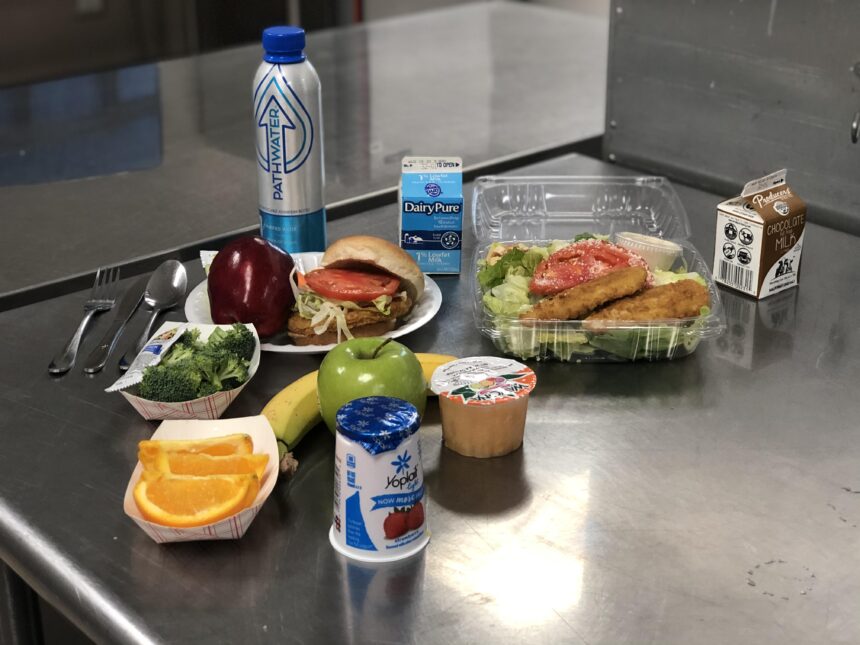Clark County School District Strengthens Student Nutrition Through Expanded Federal Meal Programs
Broadening Meal Access: CCSD’s Partnership with Federal Nutrition Initiatives
The Clark County School District (CCSD) has intensified its dedication to student health by embracing a variety of federal nutrition programs that provide free and reduced-cost meals to qualifying students.These federally supported efforts, backed by the USDA, are designed to combat food insecurity and guarantee that children receive wholesome meals essential for their physical growth and academic achievement. CCSD’s involvement spans key programs such as the National School Lunch Program, School Breakfast Program, and the Seamless Summer Option, ensuring meal availability not only during the school year but also throughout summer breaks and remote learning periods.
To maximize the reach and efficiency of these programs, CCSD collaborates closely with community organizations and employs innovative technology solutions to facilitate meal distribution. The primary federal programs in operation include:
- National School Lunch Program: Delivering balanced lunches during the academic calendar.
- School Breakfast Program: Providing nutritious morning meals to start students’ days right.
- Seamless Summer Option: Extending meal services during summer to bridge hunger gaps.
| Program | Monthly Meals Served | Eligibility Criteria |
|---|---|---|
| National School Lunch Program | Over 120,000 | Based on household income |
| School Breakfast Program | Approximately 85,000 | Income-based eligibility |
| Seamless Summer Option | Around 30,000 | Open to all students in qualifying schools |
How Free and Reduced-Price Meal Programs Enhance Student Health and Academic Outcomes
Providing students with access to nutritious meals through these programs has a profound impact on their overall well-being and educational success. Studies consistently reveal that children who regularly benefit from free or reduced-price meals demonstrate improved focus, higher attendance, and fewer behavioral challenges. By addressing hunger,these initiatives create an habitat where students can concentrate fully on their studies without the distraction of food insecurity.
Notable advantages of these meal programs include:
- Strengthened physical health and enhanced immune response
- Boosted cognitive abilities and memory function
- Lower rates of absenteeism and tardiness
- Improved social skills and emotional development
| Metric | Before Program | After Program |
|---|---|---|
| Average Attendance | 88% | 94% |
| Student Focus Levels | Moderate | High |
| Behavioral Incidents (per 100 students) | 35 | 20 |
Overcoming Obstacles and Leveraging Opportunities in Federal Nutrition Program Delivery
Despite the critical support these federal meal programs provide, CCSD faces several challenges in their execution.Managing eligibility fluctuations among students requires meticulous administrative oversight to maintain accurate funding and compliance with federal guidelines. Additionally, logistical hurdles such as ensuring timely meal deliveries, adhering to strict nutritional standards, and providing ongoing staff training amid budget limitations complicate program management.
Nevertheless, these challenges present avenues for growth and innovation. By offering free or reduced-price meals, schools not only reduce hunger but also open pathways for nutrition education that fosters lifelong healthy eating habits. CCSD’s proactive approach, including partnerships with local farms and community organizations, exemplifies how districts can enhance program effectiveness and broaden their impact.
- Challenge: Keeping eligibility data current and precise
- Opportunity: Sourcing fresh produce through collaborations with regional farmers
- Challenge: Balancing federal dietary requirements with student taste preferences
- Opportunity: Embedding nutrition education within school curricula
| Area | Challenge | Opportunity |
|---|---|---|
| Funding | Complex reimbursement procedures | Eligibility for federal grants and subsidies |
| Logistics | Disruptions in supply chains | Partnerships with local vendors and farms |
| Compliance | Strict nutritional guidelines | Offering healthier and diverse meal options |
Strategies to Increase Participation and Strengthen Community Involvement
To elevate student enrollment in meal programs, CCSD should amplify outreach efforts by utilizing diverse communication platforms. Engaging families through targeted social media campaigns,school newsletters,and local community gatherings can effectively disseminate data about program eligibility and benefits. Simplifying the submission process with multilingual forms and providing in-person assistance at schools can significantly lower barriers for families. Additionally, partnering with community organizations to conduct informational sessions can empower more parents with the knowledge and resources they need.
Building strong community ties is equally vital.Establishing feedback mechanisms where students and parents can share their experiences helps tailor meal offerings to better reflect cultural preferences and nutritional needs. Schools might organize tasting events or conduct surveys to involve the community in menu planning. Furthermore, creating volunteer opportunities related to meal distribution fosters a sense of shared responsibility and strengthens neighborhood bonds.
- Extensive multi-channel awareness campaigns
- Multilingual support for applications and communications
- Community-based nutrition education workshops
- Regular student and parent feedback collection
- Volunteer-led meal service events
Conclusion: Advancing Equity and Academic Success Through Nutrition
As CCSD continues to expand its engagement with federal meal programs, the district reaffirms its mission to provide all students, regardless of economic status, with access to nutritious food. These initiatives not only enhance student health and well-being but also contribute to a more equitable educational environment. By addressing food insecurity head-on, CCSD is fostering conditions that support academic achievement and holistic development across its diverse student body.










